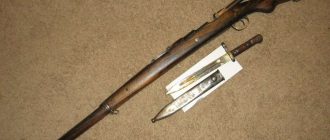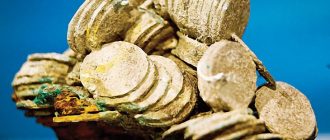When cultured Americans discovered over a generation ago, that they did nor have to buy all their antiques in European shops and palaces, and that it was more patriotic and more satisfying to “buy American,” collectors multiplied. They no longer had to cross the ocean to find treasures about which they could boast more proudly. One line became popular, then another, until early American glass came into its own. At first every piece was Stiegel or Wistarberg, naturally enough since the craving for labels is merely the commercial need of “attributions” to make a piece more costly. Much Bristol, old but not Stiegel, was attributed to the Baron and cost ten times as much as it did in England where it remained merely Bristol. Wistarberg was sought for the same reason and much Nailsea is still labeled Wistarberg in famous collections. Then came the craze for cruder forms of early American blown glass and “South Jersey” and “New York State” and “New England” glass soared in price. Reproductions and fakes began to make their appearance the moment it paid to make them, though never in great quantities.
Collectors of the most popular of all early American lines of glass are now advised to beware of pattern glass because there are so many reproductions on the market-as though the same thing could not be said of all antiques! There is not a day that I do not receive from six to twenty letters asking whether it is safe to collect this or that particular pattern because the writers have been assured that reproductions are sold as old in shops. Collectors report that dealers who have stocks of blown glass often tell inquirers that they will not handle pressed glass because it is all being faked. And when the same customers go to a dealer who happens to specialize on pattern glass, they are apt to hear that anything which is not in stock in the shop is absent because it is being reproduced and, of course, he does not handle undesirable pieces. Collectors too often are frightened out of completing sets because of such false rumors. It is time lovers of early American glass were apprised of the facts, for their own piece of mind as well as for the good of the trade.
The first real alarm among pattern glass collectors was felt when the Horn of Plenty water tumbler made its appearance. Having been an enthusiastic collector of that pattern myself for many years, I immediately felt that probably every other item would follow and the value of my set be ruined. The set included nearly every rarity. I disposed of it and it has been one of my greatest regrets that I did so. Being of lead-flint glass, it was not easy to reproduce skillfully enough to deceive experienced collectors. The water tumbler, new or old, lacks the clear bell tone when tapped that will come from almost any other genuine old piece, due to the thickness and shape and to the heavy base; but while the old tumblers ring a little and the new not at all, the resonance is not the reliable test here as it is of other forms. In old pieces there is a softness of contours, however, that is absent in the new.
For example, the diamond points in the genuine Horn of Plenty design are softly rounded, while on the new they are outstandingly sharp and pointed. The old ones had a ground-out pontil mark on the base which left the rim of the ground-out space sharp and uneven. This effect is reproduced on the new glasses but it is smooth, because the rounded space is merely pressed instead of being cut out by a grinding wheel. It is much simpler to reproduce the later patterns because they were made of lime glass, which came into general use after the Civil War. Lime was a profitable substitute for the more expensive lead-flint which gave the older glass the weight and the clear resonance of tone when tapped that every collector loves to hear.
The next imitation was the ever-popular overlay lamp. Most collectors are familiar with the beautiful two-toned effects in lamp bowls, such as amethyst cut through to clear, opaque-white to jade green, etc. The same importing house which brought over the Horn of Plenty tumblers also flooded the market with pear-shaped lamp bowls in various color combinations. Whether the importers foresaw it or not, one result was co arouse the cupidity of unscrupulous dealers. An ingenious rascal saw still greater profit by “improving” the goods. He bought every old marble-base lamp which he could obtain cheaply, chiefly those having a plain, clear glass bowl. Old milk-white bases also were used. The plain and unattractive bowl was removed, and the beautiful new reproduction reset with the aid of plaster of Paris. These were then dirtied up, wrapped in old newspapers and peddled from shop to shop and from city co city. Dealers eagerly purchased fine-looking overlay lamps, with bases that were obviously old, at anywhere from $12.00 to $18.00, for which collectors would pay from $25.00 co $50.00 fifteen years ago. The credulous dealer doubled his money. The faker more than quadrupled his.
When I begged one trade magazine to expose these fakers at the time, I was told that it was only greed on the part of the dealers who bought them that was responsible for the fraud and that they eventually would get what was coming to them. It was neither a fair nor an intelligent attitude for a trade magazine to take, since its livelihood came from the advertisements of honest dealers and from subscribers who were entitled to the protection afforded by the exposure of frauds. Its obvious duty was to warn honest but unwary dealers.
Complete lamps were also manufactured and sold but these were more easily detected than when the old base was combined with the new bowl. The collar of the new lamps exposed the fraud. On the old, the collars were chiefly of brass and sometimes of pewter. On the new, they were obviously not old. To be sure, the new collars could be removed and replaced by old, but the telltale fresh plaster of Paris always showed where they were cemented on. Another giveaway was in the marble bases, when these were used.
About eighteen years ago the same company produced and sold sconces with mirror reflectors but these were too new looking to deceive anyone. Expert copies of sconces did come on the market later, some of which would challenge an expert to decide whether or not they were old. The plain, paneled type was more easily copied. The folded edges of the old ones were always rolled over a plain wire in order to keep them straight while the new ones were merely folded over and pressed down.




